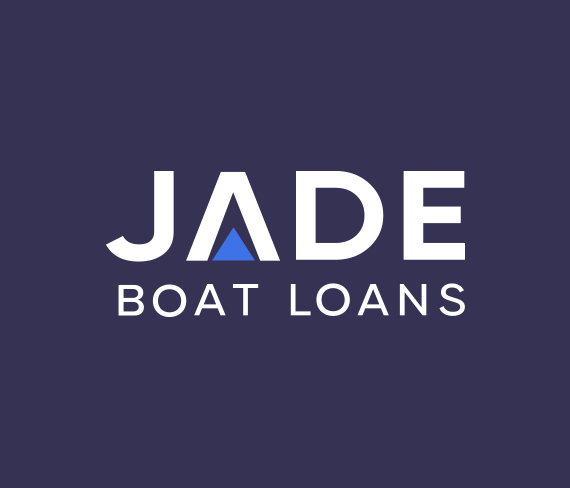Interest rates have been very much the centre of attention for the past few years in discussions around finance and the economy. To be more specific, the decisions by the Reserve Bank of Australia (RBA) Board regarding changes in the official cash rate have been receiving the headlines. So it is not surprising that those in the market for marine finance or already with a boat loan may be wondering if these RBA changes have anything to do with boat loan interest rates.
Post the announcement of the monthly RBA decisions, most of the press coverage seems to be all about home loans. There is significant coverage around how much a mortgage will increase or decrease as a result of the decision made by the RBA Board at a certain time.
But most people that have other types of loans such as existing car loans and boat loans, will not see any change to their boat loan at the time that these RBA decisions are made. So what is the connection between boat loan interest rates and the interest rate that the RBA changes – the official cash rate?
With the RBA strongly indicating more cash rate rises will be ahead, it could be a good time for those considering a new boat loan to be across what factors effect boat loan interest rates.
Fluctuations in the Cash Rate
The official cash rate is essentially at the core of interest rates for both lending and savings. But it is not the actual rate for either. Think of it as, in simple terms, a wholesale interest rate. It is actually the interest rate applied to overnight bank borrowings. Under law, the Reserve Bank of Australia is responsible for setting the cash rate as part of its role in establishing the country’s monetary policy.
The Board of the RBA meet on a monthly basis to make decisions as to whether or not to increase or decrease the cash rate. These decisions are based on the conditions in the economy and global impacts and the data available. Inflation and unemployment figures are two of the main sets of data considered by the Board.
While those in the market for new boat and other types of loans, with home mortgages and in the finance sector will typically keep a close eye on interest rates, not everyone needs to or does. But the current preoccupation with interest rates started in the early part of 2020 with onset of the COVID-19 pandemic.
At that time, there was a possibility of severe economic conditions. In order to stimulate the economy and keep it moving, as part of overall monetary policy and to complement Government stimulus measures, the RBA slashed the cash rate. The objective was to make it more attractive for businesses to borrow money to invest in new assets and equipment.
Through 2020 and into 2021, the RBA cut the cash rate to what ended up being an historic low of 0.1%. This resulting in many lenders cutting their lending interest rates. Then the worst of the pandemic was seen as over and lockdowns and restrictions lifted and cashed-up householders came out to spend. This period of high demand coincided with severe global supply issues.
The imbalance between demand and supply and the low interest rates led inflation to start soaring. As it has now stated, the speed at which the rate of inflation soared took the RBA by surprise. Through 2021 the RBA was stating it did not expect interest rates to rise until 2024. But in early 2022, it had to act and start lifting the cash rate and normalising interest rates to address inflation.
As most are now aware, that has led to increases in the cash rate over the past seven months and more increases have been indicated as being required by the RBA Board. The next cash rate decision by the RBA is due at the Board meeting on Tuesday 6 December.
Changes to Boat Loan Interest Rates
As the cash rate is a rate that lenders pay on their borrowings, it follows that as their ‘costs’ increase they will pass that on by increasing their interest rates. Lenders, including those in the marine finance sector, will respond to changes in the cash rate by changing their own lending rates. But those changes by lenders are not necessarily all the same in timing or in the amount, except in the home loan market. Note that the marine finance area works differently from the home mortgage market.
So let’s get to the key question – what happens to boat loan interest rates when the RBA makes its cash rate decisions?
A range of scenarios and possibilities can occur:-
- Lenders, which includes banks, finance companies, boat dealers and manufacturers and broker-style lenders such as Jade Boat Loans, make their own decisions about changes to their interest rates.
- Lenders may change their rate in line with RBA changes or at a time based on their own analysis.
- Some lenders may choose to change rates before a RBA announcement based on the forecasts of their own analysts.
- Some may choose to hold their rates steady and below others in the market in order to hold a competitive edge.
- Lenders that source their funding from overseas may face a different rate scenario.
- Lenders set their boat loan interest rates based on the analysis of that particular market, their exposure to that market and their interest in being involved in that market.
- Lenders that specialise in marine finance can be more competitive when it comes to interest rates.
- Any change to existing boat loans will depend on whether the interest rate on that loan is a fixed or a variable interest rate – see below for more on this.
As a result of the range of possibilities, there can be quite a range of interest rates on boat loans available across the lending market. A key reason as to why utilising our broker services to source the cheapest boat loan interest rates is so valued by our customers.
Existing Boat Loans
Now to elaborate on the point re fixed and variable rate boat loans. If a boat loan has a variable interest rate then the lender may increase or decrease as the case may be, the interest rate in sync with RBA changes. Where a boat loan has a fixed interest rate, that rate is typically fixed for the entire period of the loan.
Our Secured Boat Loan features a fixed interest rate, so once the loan is finalised, the rate is locked-in and won’t change over the loan term. Unsecured Personal Loans, which can be sought to finance some types of boats, can have a fixed or a variable rate.
In summary, interest rates for new boat loans may change at similar timing to RBA changes as lenders respond to these changes. But current loans with a fixed interest rate will remain unchanged.
Contact Jade Boat Loans on 1300 000 003 for fixed interest rate boat loans.
DISCLAIMER: THE INFORMATION AND SPECIFIC DETAILS CONTAINED IN THE CONTENT OF THIS ARTICLE HAVE BEEN PREPARED AND ARE PRESENTED PURELY AS GENERAL INFORMATION AND NOT INTENDED AS THE ONLY SOURCE OF FINANCIAL ADVICE FOR BOAT BUYERS AND LOAN BORROWERS. FOR THOSE THAT CONSIDER THEY REQUIRE SPECIFIC ADVICE, THEY SHOULD CONSULT WITH A FINANCIAL ADVISOR. LIABILITY IS NOT ACCEPTED IN REGARD TO ERRORS AND MISPRESENTED DATA AND DETAILS HEREIN.

 "
alt="">
"
alt="">